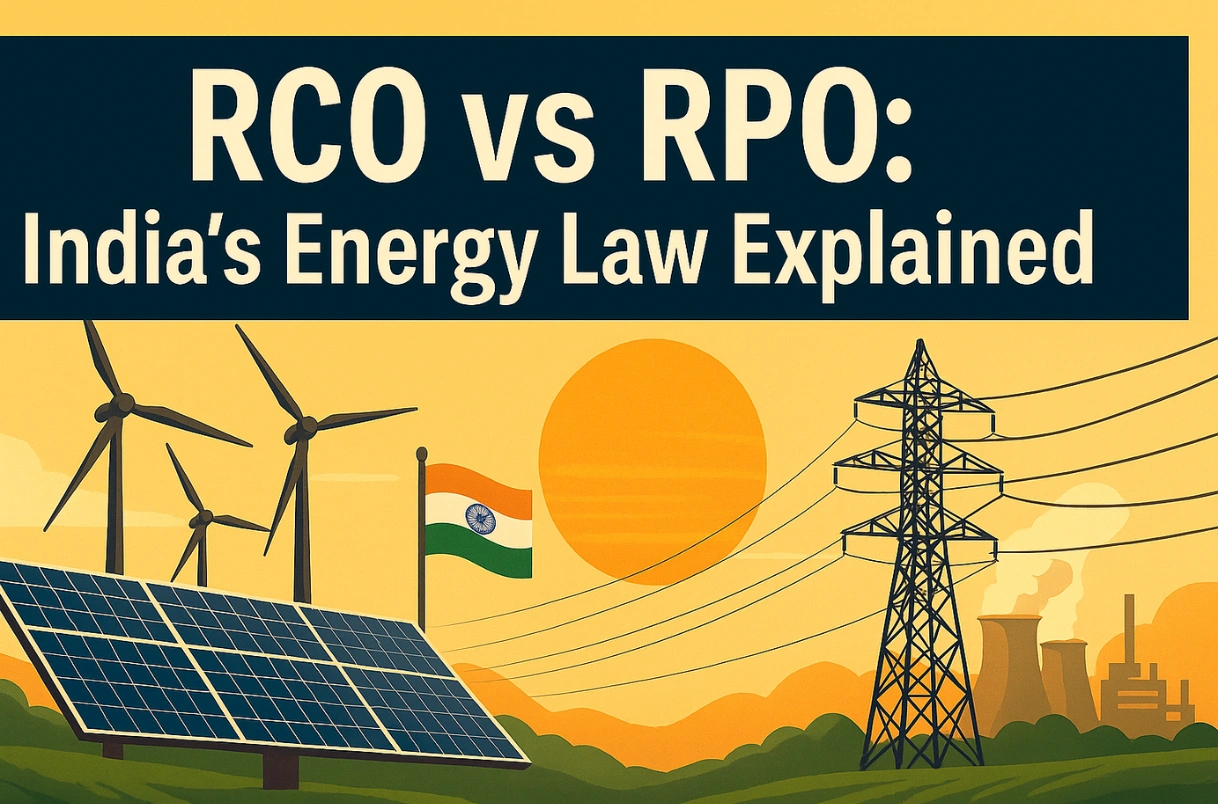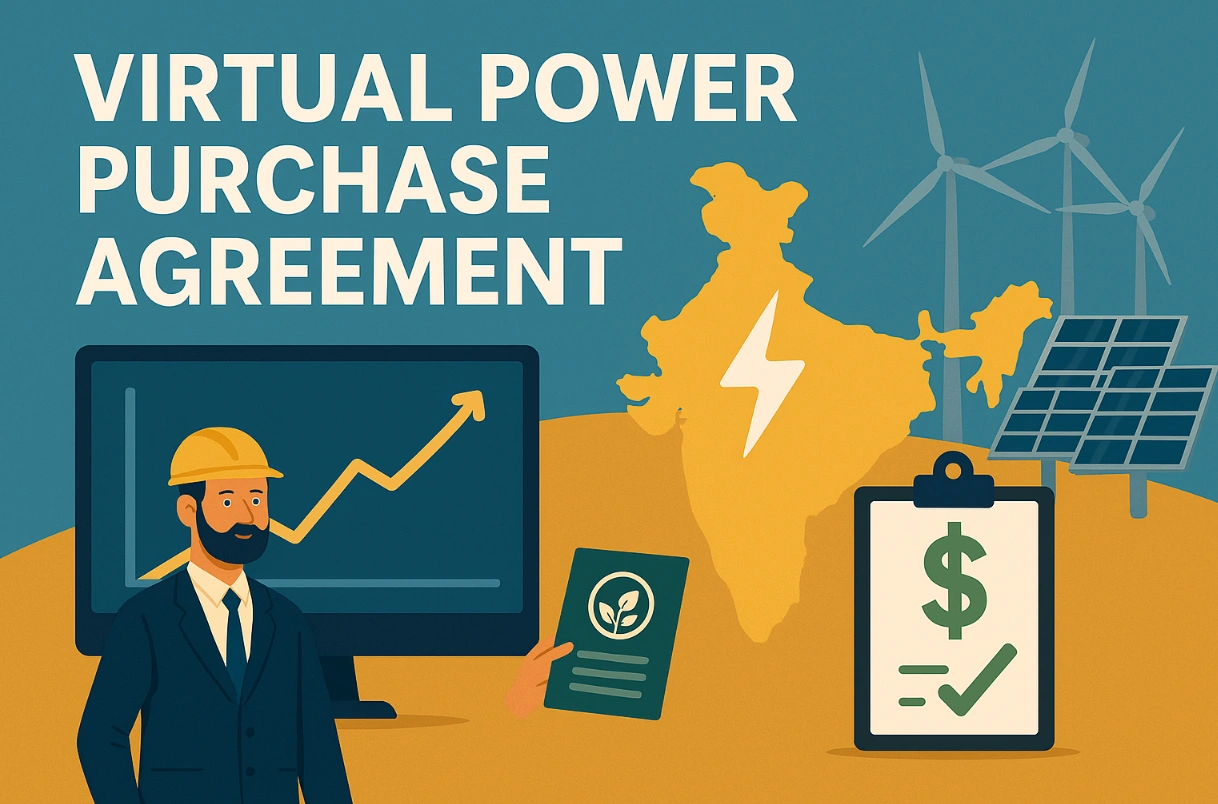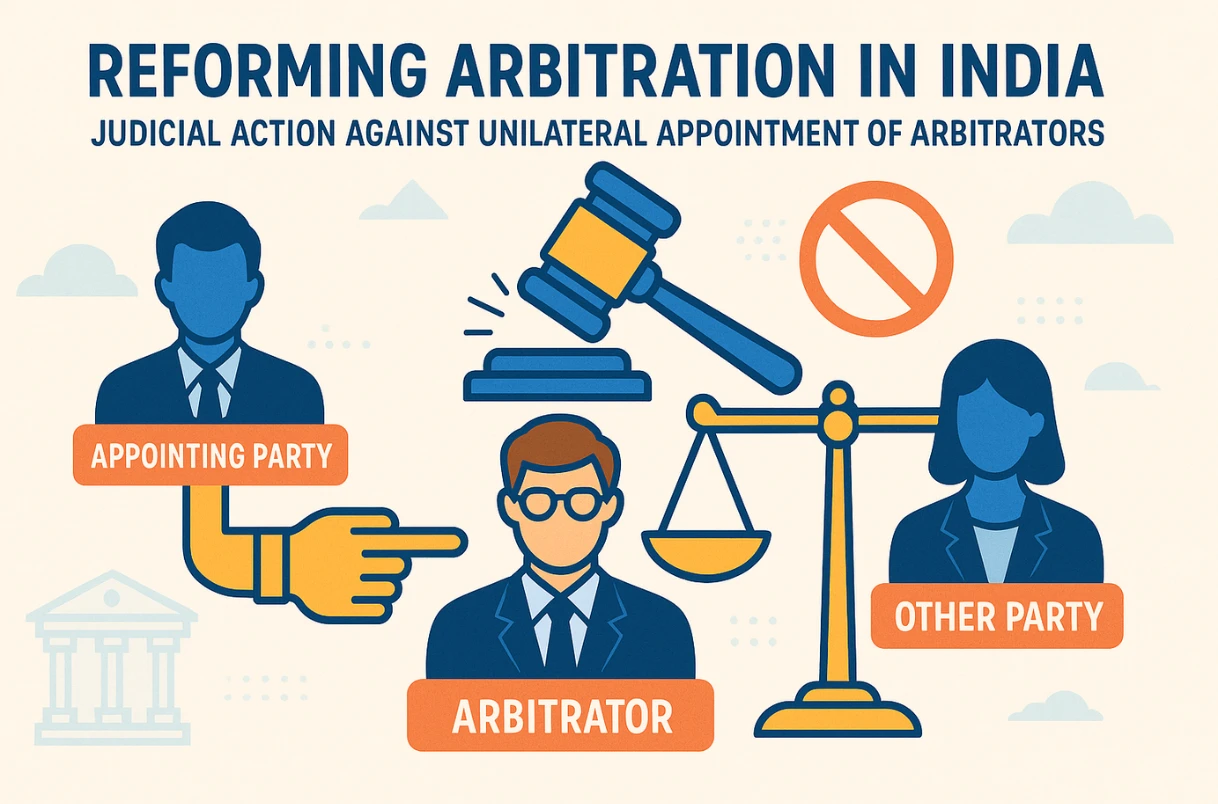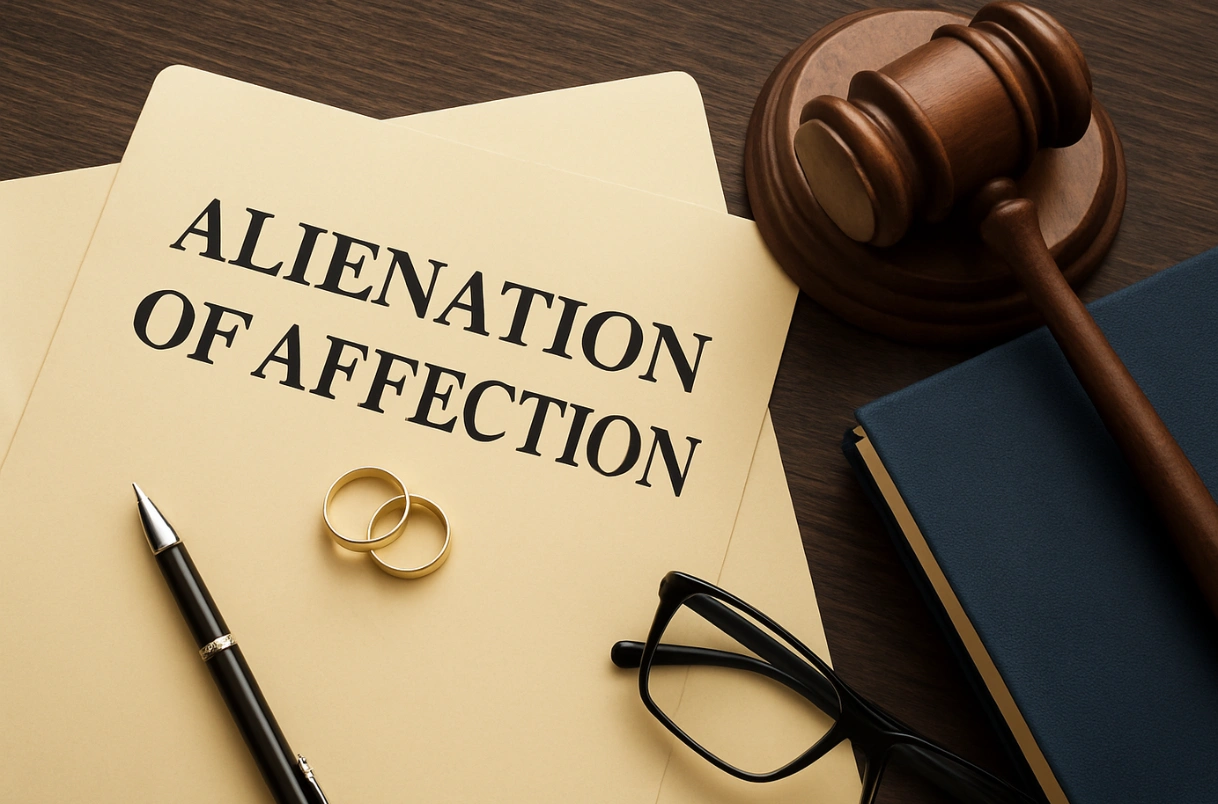RCO vs RPO: India’s Energy Law Explained

By – Avijeet Lala and Asmita Narula
Table of Contents
Introduction
With the rapid rise in the demand for electricity and the reliance on fossil fuels as a source of energy, India has recognized the urgent need to promote energy efficiency and diversify its energy-mix. The Energy Conservation Act, 2001 (“Conservation Act”) was enacted as a foundational step toward reducing energy consumption by encouraging efficient practices.
By way of an amendment in the year 2022, the Central Government was empowered to specify the minimum share of energy consumption from non-fossil sources by designated consumers, including electricity distribution companies. This article examines the applicability of the Notification issued by the Ministry of Power under the Conservation Act specifying the minimum share of consumption of non-fossil sources by designated consumers as energy or feedstock with reference to a distribution company / licensee.
The Electricity Act, 2003 (“Electricity Act”) had mandated the promotion of co-generation and generation of electricity from renewable sources, to substitute conventional thermal power with environmentally benign forms of energy and required distribution companies to procure such electricity as a percentage of the total quantum procured by it for its distribution business. The article carries out a detailed analysis of the structure of the Conservation Act, juxtaposed and in context of the Electricity Act and the various Notifications issued by the Ministry of Power.
Energy Conservation Act, 2001
A need was felt for introduction of statutory measures to promote conservation of energy and facilitate its efficient use in various sectors of the economy in view of the increasing preference for commercial energy and the consequent rise in demand for electricity and fossil fuels. A potential to reduce energy consumption by adopting energy efficiency measures in various sectors has been recognised.
It is with this purpose and objective that the Conservation Act was enacted on 29.09.20011. However, the implementation of the Conservation Act received lukewarm response over the years.
In the year 2022, the Energy Conservation (Amendment) Bill, 2022 was introduced to amend the Conservation Act. The amendment proposed a regulatory framework for (i) carbon trading in India, (ii) encouragement of penetration of renewable sources in the energy-mix, and (iii) effective implementation and enforcement of the Conservation Act. The Energy Conservation (Amendment) Act, 2022 received the assent of the President on 19.12.2022 (“2022 Amendment”). Section 14 of the Conservation Act was also amended.
Renewable Consumption Obligation
By way of the amendment, sub-section (x) was introduced in Section 14 of the Conservation Act which provides that the Central Government may, by notification specify the minimum share of consumption of non-fossil sources by designated consumers as energy or feedstock. The Central Government is required to do this in consultation with the Bureau of Energy Efficiency (“BEE”). Different share of consumption may be specified for different types of non-fossil sources for different designated consumers.
The 2022 Amendment provided for the establishment of the BEE by merging the existing Energy Management Centre to effectively coordinate with designated consumers and agencies for performing the functions and exercise the powers necessary for efficient use of energy and its conservation.
Understanding the meaning of ‘designated consumers’ under the Conservation Act
It is essential to understand the meaning of ‘designated consumers’ as Section 14(x) pertains specifically to ‘designated consumers’.
- Designated consumers is any user or class of users of energy in energy intensive industries and other establishments, as specified by the Central Government2. A list of energy intensive industries and other establishments is provided in the Schedule, which can be altered by the Central Government in consultation with BEE3.
- The Act itself provides the parameters to be considered by the Central Government while specifying designated consumers – (i) intensity or quantity of energy consumed, (ii) amount of investment required to switch to energy efficient equipments, (iii) capacity of the industry to invest in it, and (iv) availability of energy efficient machinery and equipment required by the industry4.
- The terms ‘user / users’ and ‘consumed’ have not been defined under the Conservation Act. The meaning has to be understood and construed having regard to the statutory intent, including the history of the legislation, mischief sought to be remedied by it and the objects and purpose it seeks to achieve. This is likely to result in multiple interpretations that are expected to stand settled over a period of time. However, there certainly remains a risk for the obligated entities on whether their interpretation would be accepted finally in a court of law.
- The language employed in a statute is the determinative factor for courts to ascertain the legislative intent of any statute which, means attention has to be paid to what has been said as also to what has not been said5. From the conjoint reading of the definitions under the Conservation Act juxtaposed with the purpose and objective of its implementation and amendment, it appears that reference to consumption is ‘industry specific’ and not ‘entity specific’ and the term ‘consumed’ refers to the consumption in the industry and not to any specific entity within that industry.
Electricity Distribution Companies as ‘designated consumers’
The Schedule appended to the Conservation Act includes thermal power stations, hydel power stations, electricity transmission companies and electricity distribution companies as energy intensive industries.
As per section 14 (e) and (f) of the Conservation Act, only those energy intensive industries and other establishments, having an annual energy consumption as indicated by the Central Government from time to time, would be notified as designated consumers6. A Notification was issued by the Ministry of Power (“MoP”) in 2007 whereby thermal power stations, and industries like fertilizer, cement, iron and steel, chlor-alkali, aluminium, railways, textile and pulp and paper were notified as designated consumers. Electricity distribution companies / licensees were not notified.
Subsequently, MoP issued another Notification in 2015 whereby petroleum refinery and electricity distribution companies were also notified as designated consumers based on the annual energy consumption i.e., 86,000 MTOE (metric ton of oil equivalent) and above for electricity distribution companies7. The energy equivalent of 86,000 MTOE is 10,00,180 MWh or 1,00,01,80,000 kWh8.
In view of this high threshold, it can be presumed that the intention was to calculate / work out the energy consumption of the entire area of the electricity distribution company / licensee and not its own consumption used to operate its internal systems and equipment. The function of a distribution company under the Electricity Act, is to supply electricity to premises and consumers situated within its area of supply. A distribution company does not consume the electricity procured or arranged by it from various sources. Consumption is the end use of the electricity, which occurs in the premises of the consumers. Only a fraction of the electricity is used by the distribution company for its own requirement e.g. lighting of offices or other control rooms.
An electricity distribution company dehors the consumption in its distribution area is not ‘energy intensive’ i.e., (a) it will not qualify as a ‘user’ for the purpose of being notified as a designed consumer, and (b) its own consumption will not qualify as energy intensive.
As per Note 4 of this Notification, the unit to be considered for establishing the energy consumption of electricity distribution companies was the Aggregate Technical and Commercial losses (“AT&C losses”) by using the conversion Table provided in the earlier Notification9. AT&C Losses is worked out based on the loss incurred by a distribution company in terms of technical or commercial losses in the process of supply of electricity in its area of supply.
By a subsequent notification, all electricity distribution companies, having been issued distribution license under the Electricity Act have been notified as designated consumers10. Even though the requirement of minimum annual energy consumption has been removed, the approach for calculation of energy consumption of the electricity distribution company / licensee should remain the same as the energy consumed by the consumers cannot be treated as the consumption of the distribution company.
Renewable Consumption Obligation (RCO) of Electricity Distribution Companies under the Notification dated 20.10.2023
In 2023, MoP issued a Notification specifying the minimum share of consumption of non-fossil sources (renewable energy) by designated consumers as energy or feedstock, and different share of consumption for different types of non-fossil sources for different designated consumers, from FY 2024 – 25 to FY 2029 – 3011 (“2023 Notification”). The Notification came into force on 01.04.2024. Such targets have been notified for the first time under the Conservation Act, pursuant to the introduction of Section 14 (x) by way of the 2022 Amendment, which came into effect on 01.01.2023.
The Electricity Act empowers the State Commissions to specify, for purchase of electricity from renewable energy sources, a percentage of the total consumption of electricity in the area of a distribution licensee12, which is applicable to obligated entities i.e., distribution licensees, captive users and open access consumers (“Renewable Purchase Obligation / RPO”). As per Para 6.4 (1) of the Tariff Policy 2016, while the State Commissions will specify the RPO, MoP can prescribe the long-term growth trajectory of RPO in consultation with MNRE. MoP had earlier issued a Notification in 2022, in consultation with the Ministry of New and Renewable Energy (“MNRE”) (“2022 Notification”), under the Tariff Policy 201613. Thus, the 2022 Notification had provided a long-term national trajectory for the year 2022 – 23 to 2029 – 30.
Notably, the percentage of the total energy required to be consumed from non-fossil sources (renewable energy) remains the same in both the 2022 and 2023 Notifications. Interestingly, both Section 86 (1) (e) of the Electricity Act and Section 14 (x) of the Conservation Act and the Notifications refer to the ‘total consumption’. Since Electricity Act is the primary statute dealing with electricity, the term ‘consumption’ needs to be understood in the context of the Electricity Act.
Applicability of the 2023 Notification and the overlap with the 2022 Notification issued under the Electricity Act
The 2022 Amendment which introduced sub-section (x) in Section 14 of the Conservation Act came into effect on 01.01.2023. The 2023 Notification, which was issued pursuant to the introduction of sub-section (x), came into force on 01.04.2024.
Clause 8 of the 2023 Notification stipulated that the RPO trajectory specified in the 2022 Notification continued to remain in force from 01.01.2023 to 31.03.2024. In other words, for the purpose of meeting the RCO targets notified under Section 14 (x) of the Conservation Act, the applicability of the RPO targets notified under the Tariff Policy 2016 and Electricity Act was extended. With effect from 01.04.2024, the RCO targets notified by way of the 2023 Notification would be applicable.
While the RPO trajectory issued by MoP under the Tariff Policy 2016 and the Electricity Act may not be binding on the State Commissions and the obligated entities, the trajectory issued by MoP under the Conservation Act is binding on the designated consumers notified under it.
The Conservation Act is a separate law. After the 2022 Amendment, the Conservation Act provides for substantial and strict penalty for non-compliance of directions issued under Section 14 (x) i.e., a base penalty not exceeding Rs. 10,00,000/- for every such failure and an additional penalty not exceeding twice the price of every MTOE prescribed under the Act, which is in excess of the prescribed norms14.
Both the RCO targets under the Conservation Act and the RPO targets under the Electricity Act would run in parallel.
Several State Commissions are now aligning their RPO targets in terms of the 2023 Notification to avoid confusion since the obligated entities under the Electricity Act are also designated consumers under the Conservation Act. For instance, Maharashtra15, Gujarat16, Meghalaya17, Karnataka18, Bihar19, and Madhya Pradesh20.
In fact, in November 2023 itself, the MNRE had issued a letter advising all the electricity distribution licensees to plan in advance to meet the targets to avoid any penalties21. In February 2023, BEE had requested the electricity distribution companies to submit the compliance progress in the prescribed format by 10.02.202522.
Recent Developments
MoP Clarification – April 2025
In April 2025, MoP issued a clarification whereby it has been clarified that all the earlier notifications related to RPO issued by MoP have been superseded and are not applicable w.e.f. 01.04.2024 and it is imperative for all stakeholders, including the State Commissions, to follow the 2023 Notification. It was also observed that some of the State Commissions are still not following the 2023 Notification23.
BEE RCO Compliance Directive – May 2025
In May 2025, BEE had issued Notices directing all electricity distribution companies and captive power plants and open access consumers to submit their RCO compliance reports for FY 2024 – 25 in the prescribed format and as per the timelines mentioned therein24 – initial submission on or before 30.05.2025 and audit by BEE-empanelled Accredited Energy Auditor (AEA) on or before 31.07.2025. BEE further notified that the failure to meet the prescribed RCO targets will attract penalty under Section 26 (3) of the Conservation Act and failure to submit the compliance report will attract penalty under Section 26 (4) of the Conservation Act.
The aforesaid timeline has been revised by BEE. The aforesaid designated consumers are required to submit the final RCO compliance report [certified by the Plant Head and audited by the BEE-empanelled Accredited Energy Auditor (AEA)] on or before 31.07.2025 and the requirement of initial submission was removed25.
Conclusion
The introduction of RCO under the amended Conservation Act marks a pivotal step in India’s strategy to integrate renewable energy more deeply into the power sector. It represents a significant regulatory shift in India’s energy governance framework. By stipulating binding targets for non-fossil energy consumption, RCO had reinforced India’s commitment to sustainability and energy transition. For electricity distribution companies, this not only redefines their compliance landscape but also signals a broader transformation in how energy consumption is regulated and monitored.
As the RCO framework co-exists with the RPO regime, it becomes crucial for the stakeholders to navigate the overlapping obligations. The alignment of state-level RPO targets with the centre-level RCO targets reflects a concerted national effort to streamline renewable energy obligations. In the coming years, the success of this legislative initiative will depend on the effectiveness of its enforcement, the responsiveness of stakeholders, and continued regulatory clarity.
FAQs
-
What is the Renewable Consumption Obligation (RCO)?
The Renewable Consumption Obligation (RCO) is a policy mechanism introduced under the Energy Conservation Act, 2001 (as amended), which mandates designated consumers to meet a minimum share of their total energy consumption through renewable sources. Unlike RPOs that focus on the purchase of renewable electricity, the RCO expands the scope to include all forms of renewable energy consumption — including thermal and other non-grid renewables — thereby pushing for a more integrated and direct usage of clean energy by industrial and commercial entities.
-
How is RCO different from Renewable Purchase Obligation (RPO)?
While the RPO is a mandate under the Electricity Act, 2003, requiring obligated entities such as distribution licensees and open access consumers to purchase a specified percentage of electricity from renewable sources, the RCO is governed by the Energy Conservation Act and focuses on actual renewable energy consumption, regardless of the source of procurement. RPO is limited to electricity purchases through the grid or open access, whereas RCO encompasses direct consumption of renewable energy, including thermal sources and on-site renewable generation, ensuring a broader impact on decarbonization.
-
Which legislation governs RCO and RPO in India?
The Renewable Purchase Obligation (RPO) is governed under Section 86(1)(e) of the Electricity Act, 2003, and is enforced by State Electricity Regulatory Commissions (SERCs). On the other hand, the Renewable Consumption Obligation (RCO) is mandated under the Energy Conservation Act, 2001, specifically introduced via the amendment in 2022, and is operationalized through the Bureau of Energy Efficiency (BEE) and the Ministry of Power. This distinction places RCO under the climate and energy efficiency framework, while RPO remains within the electricity regulation domain.
-
Who qualifies as a designated consumer under the Energy Conservation Act?
Designated consumers are specific industrial and commercial entities identified by the Central Government under Section 14(e) of the Energy Conservation Act, based on their energy consumption levels. These include sectors such as iron and steel, cement, fertilizers, aluminum, textiles, and other high-energy industries. These consumers are required to comply with various energy efficiency norms and now, under the RCO framework, must also ensure a portion of their total energy use is sourced from renewables.
-
What is the significance of the 2023 Notification on RCO?
The 2023 notification issued by the Ministry of Power formally operationalized the RCO framework and set forth year-wise renewable energy consumption targets for designated consumers beginning from FY 2024–25. This notification is significant as it represents a clear policy shift toward direct consumption-based clean energy obligations, giving statutory teeth to India’s broader decarbonization agenda. It also aligns the Energy Conservation Act with India’s Nationally Determined Contributions (NDCs) and net-zero targets by 2070.
-
Are RPO and RCO obligations overlapping?
Although both mechanisms aim to promote the adoption of renewable energy, RPO and RCO differ in scope, legal foundation, and enforcement mechanisms. However, there is potential overlap where a designated consumer is also an obligated entity under RPO. In such cases, the obligations are complementary but not substitutable — compliance under RCO does not exempt the entity from meeting RPO targets, and vice versa. Entities must carefully assess both obligations to avoid double-counting or under-compliance.
-
What penalties apply for non-compliance with RCO targets?
Under Section 26 of the Energy Conservation Act, failure to comply with notified consumption standards — including RCO targets — can result in financial penalties. The Act allows for a penalty of up to ₹10 lakh, with an additional fine of ₹10,000 per day for continued non-compliance. Furthermore, the designated consumer may face public disclosure of non-compliance and disqualification from various government incentive programs, which could significantly affect reputational and operational standing.
-
How are state electricity commissions adapting to the new RCO guidelines?
While RCO is centrally driven and falls outside the direct jurisdiction of state electricity commissions, several SERCs are beginning to consider aligning their RPO enforcement and renewable energy forecasting frameworks to account for direct consumption obligations. However, as RCO operates under a different statute, its enforcement will primarily be through BEE and energy auditors, with potential collaboration from SERCs in overlapping areas such as monitoring and cross-verification of compliance data.
-
What is the compliance reporting timeline for RCO?
As per the 2023 notification, designated consumers are expected to begin RCO compliance from FY 2024–25. Annual compliance reports will need to be submitted within the timeframe specified by the Bureau of Energy Efficiency, and the data must be verified by certified energy auditors. The reporting will include total energy consumption figures and the share of renewable energy usage, along with supporting documentation on procurement sources, on-site generation, and third-party verification mechanisms.
-
How does the RCO support India’s clean energy transition?
The RCO deepens India’s energy transition by targeting industrial consumption, which accounts for a significant portion of the country’s overall energy use. By mandating renewable consumption rather than just purchase, the RCO drives cleaner industrial operations, reduces reliance on grid-based fossil energy, and catalyzes investments in decentralized and process-integrated renewable technologies. This complements grid decarbonization efforts and supports India’s long-term targets under the Paris Agreement and national climate policy.
References
- Statement of Objects and Reasons of the Energy Conservation Act, 2001
- Section 14(e) read with Section 2(g), Conservation Act
- Section 14(f), Conservation Act
- Section 14(e), Conservation Act
- Shiv Shakti Coop. Housing Society v. Swaraj Developers, (2003) 6 SCC 659
- Notification No. 394 (E) dated 12.03.2007
- Notification No. 3542 (E) dated 29.12.2015
- Energy equivalent of a MTOE is 11.63 megawatt-hour (MWh) or 11630 kilowatt-hour (kWh). Section 14B of the Conservation Act empowers the Central Government to prescribe the value of per MTOE of energy consumed in consultation with BEE.
- Notification No. 394 (E) dated 12.03.2007
- Notification No. 3445(E) dated 28.09.2020
- Notification No. 4617(E) dated 23.10.2023
- Section 86 (1) (e), Electricity Act
- Order No. F. No. 09/13/2021-RCM dated 22.07.2022
- Section 26 (3), Conservation Act
- MERC (Renewable Energy Purchase Obligation, its Compliance and Implementation of Renewable Energy Certificate Framework) (First Amendment) Regulations, 2024
- Draft GERC (Procurement of Energy of Renewable Sources) Regulations, 2024
- MSERC (Renewable Energy Purchase Obligation & its Compliance) (Third Amendment) Regulations, 2018
- Order dated 08.10.2024
- Draft BERC (Renewable Purchase Obligations, its Compliance and REC Framework Implementation) Regulations, 2025
- Order dated 13.12.2023, Petition No. 31/2023
- D.O. No. P&RA/2023-24/8 dated 28.11.2023
- Notice bearing F. No. NMEEE-11018/1/2023-BEE dated 03.02.2025
- Notice bearing F. No. 09/01/2025-RCM dated 16.04.2025
- Notice bearing F. No. NMEEE-11018/1/2023-BEE dated 14.05.2025
- Notice bearing F. No. NMEEE-11018/1/2023-BEE/1514 dated 30.05.2025


